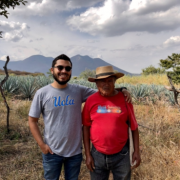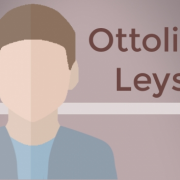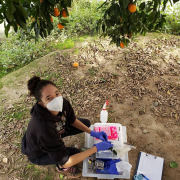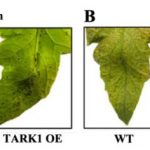Getting to the Root: A Conversation with Prof. Malcolm Bennett, FRS
Amongst the momentous dates in the calendar of a scientist, the announcement of new fellows of The Royal Society of London will always have a special place. Founded in the year 1660, this oldest surviving scientific institution embodies the spirit of natural sciences and features some of the beacons of scientific history among its members. Thus, it is indeed a landmark event in the life of academic researchers to get elected to the Royal Society and sport the three letters suffixed to their names.
One of the fellows selected for the current year in the subject group of plant sciences is Prof. Malcolm Bennett, from the University of Nottingham. Malcolm has been a pioneer in studying the processes underlying the growth and development of plant roots for three decades. In particular, his contribution to the understanding of the role of the phytohormone auxin in root responses has been critical, now extending to studying how the root architecture of crop plants changes in the soil in response to environmental conditions. We spoke to Malcolm on his election to the Royal Society and understand more about his scientific pursuits.
1. How does it feel to get elected to the Royal Society?
As you can imagine, I felt a whole mixture of emotions on learning about my election! ‘Very privileged’ to have worked with so many talented young researchers and colleagues over these past 30 years, whose hard work helped make this award possible. ‘Delighted’ for the research recognition this award brings to Plant & Crop Sciences at the University of Nottingham. ‘Incredibly lucky’ since each year only 60 Fellows and Foreign Members are elected from 800 candidates proposed by the Royal Society Fellows and ‘Very humble’ after learning that six of the newly elected fellows are Nobel laureates.
2. It is the ‘visible’ part of the plant that is colorful, attractive and looks seemingly complicated. Tell us about how (and why) you got interested in the humble-looking ‘hidden half of plants’. During my final undergraduate year at the University of Manchester (1985), I attended a research seminar by a new academic and group leader, Dr. Julie Cullimore, about root nodules. It was amazing to learn how legume roots and Rhizobium formed such a complex symbiotic partnership to create an entirely new root organ – the nodule – to fix nitrogen. Julie had a PhD position available to research how root nodules assimilated the fixed nitrogen. This was the start of my career-long fascination with ‘the hidden half’ of plants…
3. Who are the scientists who have inspired your work, and in what way did they inspire you?
I have been very lucky to have had many scientists who have inspired my work, and very often the most influential were not plant scientists!
For example, as the only faculty member who was a plant developmental geneticist at the University of Warwick (1993), I searched out others with similar outlooks. I was very fortunate to have a colleague who was a Drosophila geneticist, Dr’s Cahir O’Kane (later Head of Genetics at Cambridge) who kindly invited my team to hold joint lab meetings. The resulting exchange of ideas proved highly influential to the scientific approaches and questions I went on to employ and ask. For example, Cahir’s team was pioneering the use of a cell type-specific expression system (based on the GAL4 enhancer trap approach) to manipulate signalling in selected Drosophila neurons in order to examine the resulting behavioural effects. I was inspired by the elegance of this approach, leading us to employ this same cell type-specific expression strategy in Arabidopsis roots to manipulate responses to hormones like auxin, ABA and GA. This approach enabled us to discover an entirely new perspective about how hormones control organ growth in plants, revealing these signals control tissue-scale mechanisms in order to regulate overall organ growth. In 2010, I started working with my Nottingham colleagues, soil scientist Sacha Mooney and computer scientist Tony Pridmore to study root responses in a more natural environment. Working closely together (co-supervising a brilliant PhD student, Stefan Mairhofer) we were able to non-invasively image growing roots using micro-scale X-ray Computed Tomography (MicroCT). This breakthrough was crtical to secure BBSRC Professorial Research Fellowship (2010) and ERC Advanced Investigator (2012) awards to build a multidisciplinary research team spanning plant, soil, mathematical and computer sciences. This has led to improvements in MicroCT-based imaging techniques and a complimentary program to develop innovative image analysis tools, culminating in the creation of the X-ray MicroCT Hounsfield Facility. Since opening in 2014, the Hounsfield Facility has helped our team and collaborators characterise many new biological insights and novel root responses in soil. Highlights include discovering how roots only branch in soil when in direct contact with water using the novel adaptive responses xerobranching and hydropatterning, with Belgian and US collaborators (Orman et al, 2018; Bao et al, 2014).
4. You have been a part of many important studies that have shaped our understanding of root growth and development. Which of these do you hold closest to your heart and why?
My first corresponding author paper is probably the one closest to my heart. In 1990, I became fascinated with using genetic approaches to study the mode of action of the plant hormone auxin, but was concerned that mutations in its core molecular machinery may be lethal. To overcome this issue, I elected to study a ‘non-essential’ auxin-regulated process, root gravitropism. In 1991, I gained a NATO-SERC fellowship to spend 2 years at the University of Arizona in Ken Feldmann’s lab who had pioneered T-DNA tagging in Arabidopsis. After screening 6000 T-DNA tagged lines for root gravitropic defects, I identified a T-DNA tagged agravitropic mutant in the AUX1 gene. This breakthrough provided the stepping stone to my first faculty position back in the UK in 1993. The resulting publication in Science in 1996 reported the identification and characterisation of the AUX1 gene which encoded the first auxin transport protein described in plants. Since this initial publication [cited >1000 times], the molecular basis of auxin transport has become the focus of intense international research.
5. What suggestions would you offer graduate students and early career researchers who are passionate about working in root biology?
I would encourage graduate students and early career researchers to ‘think outside the box’ and engage with other disciplines as I strongly believe major scientific breakthroughs are more likely to arise at disciplinary boundaries. For example, interactions between root biologists and soil scientists are particularly valuable, yet surprisingly infrequent. How can we research root biology without understanding the soil environment in which this plant organ grows and forages for resources in?
6. You are engaged in the relatively young field of phenomics. How has it changed the field of root biology?
Phenomics is helping revolutionize root biology research as it is attracting scientists from other disciplines to our field who bring new ideas, approaches and solutions to challenging problems. For example, until very recently, segmenting roots from X-ray MicroCT images took many times longer than the period taken to scan the soil column. However, deep learning algorithms developed by Nottingham colleagues in Computer Science* now mean that it now takes less time to segment than scan. This represents a game changer for non-invasive imaging of roots in soil!
*Mohammadreza Soltaninejad , Craig J. Sturrock , Marcus Griffiths , Tony P. Pridmore , and Michael P. Pound (2020) Three Dimensional Root CT Segmentation Using Multi-Resolution Encoder-Decoder Networks. IEEE TRANSACTIONS ON IMAGE PROCESSING. Vol 29, 6667-6679.
7. What two classical papers have inspired your work? Which two recent papers (from groups other than your own) that have caught your attention or that you consider game-changing?
As a plant scientist, the publication of the Arabidopsis genome sequence (The Arabidopsis Genome Consortium, Nature, 2000) was a major milestone since it revealed for the first time the genomic makeup of a plant and clearly demonstrated that they are not ‘green animals.’ Instead, it revealed plants, as multicellular organisms, have evolved completely different signalling solutions. For example, plants do not contain large repertoires of G protein coupled receptors in their genomes. In contrast, plants have evolved novel classes of receptors, many based on the ubiquitination machinery, where hormones like auxin bring together its receptor and a labile transcriptional repressor protein, to activate hormone responsive gene expression.
As a root biologist, one of the most influential ‘classical’ papers I have read was published in 2000 in Plant Physiology (124: 1718–1727) by Gerrit Beemster and Tobias Baskin. The authors started by asking the reader, “How does a plant regulate the rate at which its organs grow?” They went on to elegantly describe, employing a kinematic approach, how the hormone signals auxin and cytokinin regulate root growth rate. For example, their dynamic growth studies revealed how auxin increased the length of the meristem, but lowered root elongation by narrowing the elongation zone and time spent by a cell in this zone. The complex, transient effects that auxin had on dividing and elongating root cells opened my eyes* to the spatio-temporal regulation hormone signals must confer in order to control organ growth. Gerrit and Tobias’ insights helped inspire me to later ask, ‘where and when did hormones like auxin act to control root growth processes like gravitropism?’
*I must confess that I was so engrossed reviewing this manuscript for Plant Physiology whilst invigilating an undergraduate exam, I did not look up for a whole hour!
A very influential publication that caught my attention recently was the paper from Dolf Weijer’s team (Sumanth Mutte et al, eLife 2018; 7:e33399) entitled “Origin and evolution of the nuclear auxin response system.” By adopting a phylogenomics approach the authors were able to reconstruct the origin and evolutionary trajectory of nuclear auxin response protein families spanning the entire plant kingdom, from algae to angiosperms. This powerful evolutionary approach revealed the ‘ancestral state’ of this critical signalling pathway, the origins of key protein domains and ‘where’ and ‘when’ complexity arose in the plant lineage. Finally, a comparative transcriptomic approach revealed fascinating insights including that the number of auxin-responsive genes is positively correlated with the number of ARFs in land plants. The paper provides a real tour de force about how nuclear auxin signalling operates and has evolved across the plant kingdom.
Two recent papers by Soyano et al. (Science) and Schiessl et al. (Current Biology) have revealed how a key regulatory component controlling lateral root organogenesis (LBD16) has been hijacked in legumes to coordinate nodule formation. The evolutionary origins of nodules have long fascinated scientists and led to theories ranging from them being highly modified stems or lateral roots. The latter theory is supported by Rhizobium inducing lateral root-like nodules in the non-legume Parasponia by triggering pericycle cell divisions, which normally produce lateral roots. However, in legume roots, Rhizobium also induces cortical cell divisions, triggering many morphological differences to lateral root organogenesis. The recent papers reveal the LBD16 gene sequence was co-opted to control nodule formation via the acquisition of a new binding site within an intron. This binding site was sufficient to render the gene inducible by cytokinin in cortical cells and initiate downstream response, allowing the formation of a new nodule organ.
Whilst reflecting on my choice of papers above, I was struck how insightful phylogenomic approaches are proving in helping resolve long asked, fundamental questions in plant biology.
8. You have extensively worked with model plants like Arabidopsis to uncover fundamental aspects of root development and have now moved to translational research. How do you see the pros and cons of basic and translational research?
Like every other scientist, I want new insights generated from our research to have an impact for good. As a plant scientist, my research has particular relevance to global food security since developing crops with improved water and nutrient uptake efficiency is increasingly important due to climate change and to attain sustainable agriculture.. Pioneering work by Jonathan Lynch at Penn State has been particularly influential to me over the past decade, after he successfully demonstrated the importance of root traits to improve yield stability even in low nutrient soils or drought prone environmental conditions. Despite this knowledge, only a few genes that regulate key root architectural traits such as angle, depth and density have been identified in crops to assist breeding efforts.
To accelerate this approach, I am exploiting the knowledge accrued about root development over the last several decades in the model Arabidopsis, to improve root traits in crops. Our team are translating this knowledge and expertise to re-engineer root traits and optimise yields in cereal crops relevant to Europe/Americas (wheat), Asia (rice) and Africa (pearl millet) in collaboration with partners based in Europe, US and Africa. For example, I co-lead a Royal Society International Collaborative award with Dr. Ndjido Kane (Dakar) between Nottingham, French and Senegalese teams to improve drought tolerance in the important West African crop Pearl Millet, which supports >90 million people across the Sahel region. Key root traits are being characterised in a genetic diversity population of Pearl Millet in Senegal-based field trials, then detailed phenotypic analysis performed in Nottingham using advanced imaging and Deep Learning algorithms. This phenotypic information is then combined with genomic datasets generated in France to pinpoint key regulatory genes that control key root traits, drought tolerance and yield in Pearl Millet. The resulting knowledge can then be exploited by breeders to improve this vital crop. This example illustrates how sharing expertise, between basic and applied researchers, across disciplines and borders, has the potential to deliver so much.
9. What kinds of experiments excite you and why?
Despite my fascination with characterising the ‘hidden half’ of plants using phenotyping approaches, I remain a committed molecular biologist who wants to uncover the mechanisms underpinning how root adaptive responses are controlled by external signals like water and nutrients. For example, working closely with proteomics expert Ari Sadanandom (Durham), our team recently reported (Orosa et al, 2018 Science) how plant roots sense water availability and adapt their branching pattern through post-translational modification of the key transcription factor ARF7 with SUMO. In this study, I was excited to be able to design experiments which generated clear cut answers, such as how by mutating the ARF7 SUMOylation sites we were able to uncouple the link between external water availability and positioning of lateral root branches (hydropatterning). I guess this demonstrates that I am a reductionist at heart…
10. What do you think is the role of scientific societies such as the Royal Society in today’s scientific environment?
Scientific societies such as the Royal Society and US National Academy of Science (NAS) play a critical role in contributing to public debates and government policies, particularly when science-led policy making is so desperately needed in critical areas such as climate change and the Covid-19 pandemic. For example, the Royal Society has recently contributed expert-led reports and advisory groups on critical societal issues such as the effectiveness of face mask use and epidemiological modelling to help combat the Covid-19 pandemic in the UK. The Royal Society also plays a critical role supporting the next generations of scientists through its prestigious research fellowship schemes, scientific meetings and journals (including the first scientific journal to be published in 1665 – Philosophical Transactions of the Royal Society).
11. What are the major challenges do you think the plant science community is facing? Do you have any suggestions to overcome them?
The plant science community faces major challenges in common with many other scientific communities. Issues include the erosion of public trust in plant science research and its benefits (e.g. anti-GM); nationalist policies undermining international research funding opportunities and cooperation (e.g. UK access to EU research programmes); and the accelerating impact of climate change which threatens to outpace plant science-based breeding solutions.
I passionately believe that the plant science community should
- Engage more actively in public debates about topics such as GM and gene editing to challenge current thinking and government policies.
- Lobby to ring-fence support for curiosity-driven research as this approach underpins much of the diversity, excellence, novelty AND potential for translation that is the hallmark of our discipline.
- Create mechanisms to support researchers working at the interface between disciplines as major breakthroughs are more likely to arise at these boundaries. The creation of UKRI (an NSF-style organization) in the UK is encouraging (as is the appointment of plant scientist Ottoline Leyser to lead it), but its mechanisms to support interdisciplinary research remain embryonic.
- Push for increased funding for international plant science initiatives (e.g. International Wheat Yield Partnership)
12. What progressive changes would you like to see in the global plant science community?
Progressive policies which are vital to the future of the global (plant) science community include:
- Developing more effective ways to attract and retain minorities and women in science to maximize the breadth and depth of the pool of talent available, whilst empowering greater social mobility, equality, and diversity.
- Retaining an international outlook. For example, it is imperative the UK remains closely associated with European Research organizations such as the ERC and EU Horizon program that support scientific excellence, training, and exchanges.
13. You are hosting the Rooting 2021 conference next year. How do you think scientific conferences will change in the near future amidst challenges like the current COVID-19 pandemic and worsening climate change?
Scientific conferences are experiencing a sea change in outlook in response to Covid-19, climate change and the changing appetite for international travel amongst delegates and how they now want to participate in meetings. In our own case, we made the decision to delay our original ROOTING 2020 meeting in Nottingham (scheduled June 2020) for 12 months once the scale of the pandemic became clear. Nevertheless, this presented an unfortunate diary meeting clash since the International Society for Root Research (ISRR) conference (held every 3 years) was scheduled for May 2021 in Missouri. However, by scheduling both meetings to take place simultaneously and share key content, we could turn this diary clash into an opportunity for many root researchers not to have to travel long haul ‘across the pond.’ I raised the idea with ISRR President Michelle Watt and ISRR11 Lead Organiser Bob Sharp who enthusiastically supported and embraced the idea. Joint conference organising committees have now taken place and plans for a ‘Live-Aid’ style root research meeting simultaneously taking place in the US and UK is now well advanced for May 2021! We anticipate that, as people opt to reduce inter-continental travel, this style of distributed meeting that encourages the use of surface (rather than air) travel, combined with online participation, will become a far more common model.
14. How do you see the field of root biology in the times to come and what are the outstanding questions that you’d like to answer in your career?
I anticipate that the field of root biology will move progressively towards embracing more realistic approaches that integrate what I refer to as the ‘trinity of parts’ that (largely) make up the rhizosphere – the plant root, microbes and soil. This presents enormous challenges, but also fascinating opportunities, as we attempt to deal with the complexity presented by the diversity of microbial populations and soil structures, by exploiting new approaches contributed from new partnerships forged with the microbial and soil research communities.
In my own case, questions I am fascinated by include – ‘how do plant roots sense water availability?’, ‘How do roots sense stresses in their physical environment such as soil compaction?’, ‘How can we best exploit the knowledge that comes from elucidating the molecular mechanisms that control these processes?’.









